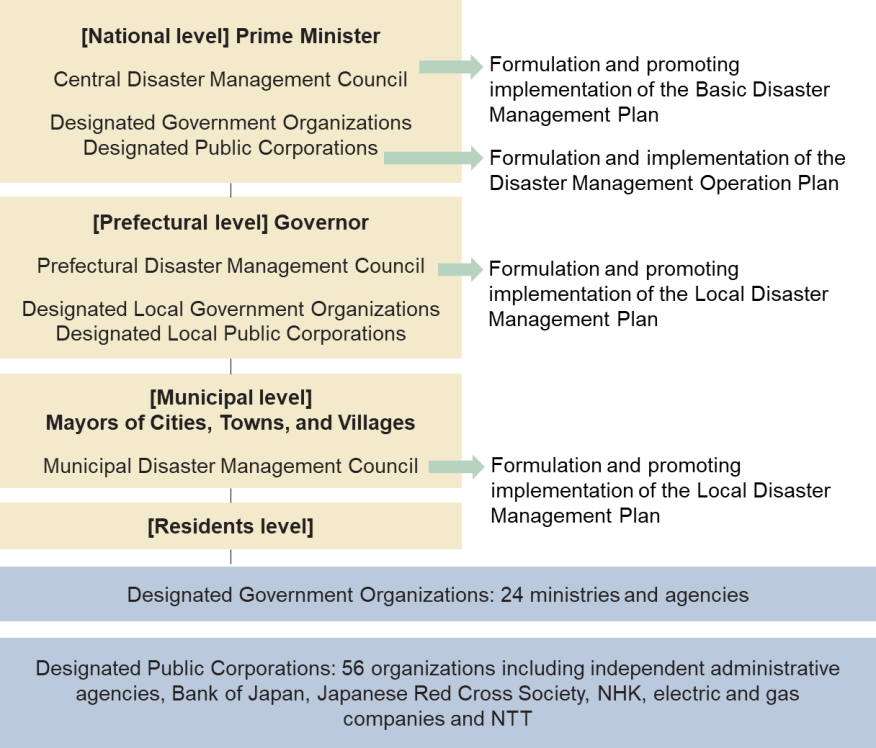
Disaster Management Manual
A manual for practitioners and decision makers!

Disaster Management Manual
A manual for practitioners and decision makers!
Coordination and cooperation are crucial for effective disaster management since a wide range of organizations, such as national government, local government, highway companies, contractors’ association, consultant association, and other related organizations are engaged in preparedness, mitigation, response, and recovery activities 1.
Hurricane Katrina exceeded the disaster response capabilities that had been built up and caused a regional catastrophe. Hurricane Katrina caused difficulties in coordinating communications, security, evacuation, and supply systems in response to a major hurricane disaster, eventually leading to the collapse of command systems and widespread confusion and disasters. Based on this experience, disaster response was reviewed under the "all-hazards approach" in disaster preparedness and response, including the scale of the disaster, sharing of the expected disaster with the population, continuity of government operations, mass evacuation, and security issues 2, 3. Particularly noted was the need for better coordination between the federal government and other response teams. For many of the team members, responding to a disaster is a secondary task, and they had never met each other before Katrina and had not trained together before the disaster. As a result, the response team functioned more like a loosely organized group than a well-trained rapid response team. The importance of cooperation and coordination among the parties involved was pointed out.
In the 1995 Hyogo-ken Nanbu Earthquake, an unprecedented seismic disaster occurred, and the affected areas were devastated. In a large-scale disaster, support from outside the disaster area is indispensable, and this was recognized in the case of this earthquake. In response, many infrastructure managers have signed disaster agreements with related organizations on a nationwide scale to strengthen their cooperation in the event of a disaster. They have also signed agreements with the Self-Defense Forces for emergency response, with construction industry associations and consultant associations for emergency response, and with local governments for a wide range of cooperation, from regular maintenance to emergency management. In recent years, even closer cooperation systems have been established with local governments. In Japan, the spearhead of disaster response is the local government. In recent years, liaisons, TECH-FORCE, and recovery agents have been established to support the local governments in their tremendous work, and a system has been built in which all related organizations work together to respond to and recover from disasters. Ishiwatari has written in detail about these cooperative systems.
Regardless of the various triggers, it is important to enhance the cooperative system between the national government and local governments, government agencies and expressway companies, and other organizations. Figure 4.3.8 4 shows the outline of Japan’s disaster management system as an example of the disaster management system.
